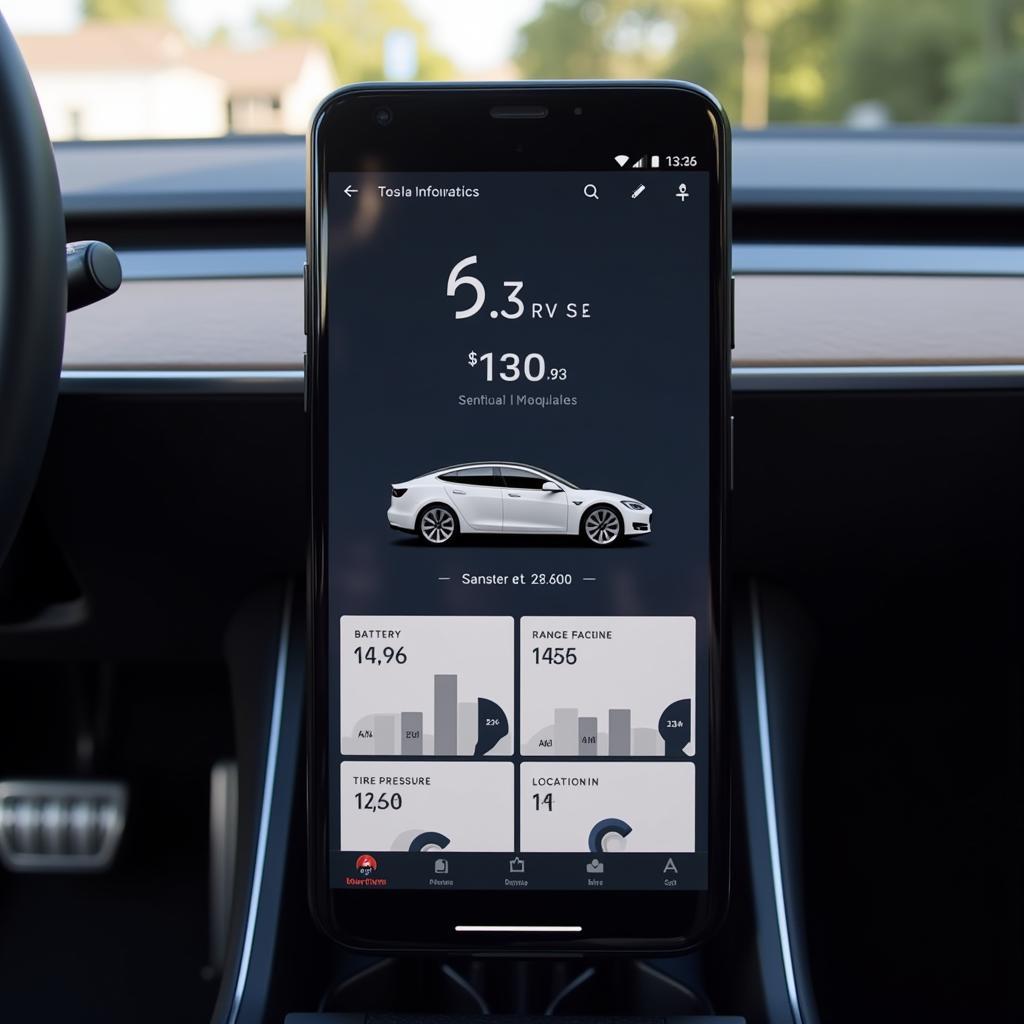Your cart is currently empty!

Finding the OBD2 Port on Your Model 3: A Comprehensive Guide
The Tesla Model 3, a beacon of automotive innovation, often leads to questions about its diagnostic capabilities. One common query is, “Where is the OBD2 port on a Model 3?”. While the Model 3 doesn’t have a traditional OBD2 port like gasoline-powered vehicles, it offers alternative ways to access diagnostic information.
Unveiling the Mystery: Why No Traditional OBD2 Port?
The absence of a standard OBD2 port on the Model 3 might seem unusual, but it stems from the fundamental difference in technology. Traditional cars rely on OBD2 ports to communicate with external diagnostic tools, primarily to monitor emissions-related systems.
Tesla, being fully electric, eliminates the need for traditional emissions control systems. Instead, the Model 3 boasts a sophisticated internal network that monitors various vehicle systems. This network uses proprietary protocols, making a universal OBD2 port incompatible.
Accessing Diagnostic Data on Your Model 3
While a traditional OBD2 port is absent, Tesla provides several avenues to access diagnostic information:
- Tesla Mobile App: This app grants you real-time data on your vehicle’s status, including battery level, range, tire pressure, and more.
- Tesla Service Center: Tesla service centers possess specialized equipment and software to perform in-depth diagnostics and software updates.
- Third-Party Apps and Devices: Several third-party apps and devices, specifically designed for Tesla vehicles, can connect to your car wirelessly and provide diagnostic insights.
Understanding the Benefits of Tesla’s Approach
Though the lack of a conventional OBD2 port might appear limiting, Tesla’s approach offers distinct advantages:
- Enhanced Security: Proprietary protocols make unauthorized access to the vehicle’s systems significantly more challenging.
- Over-the-Air Updates: Tesla can remotely diagnose and address many issues through software updates, often eliminating the need for physical visits to service centers.
- Streamlined Diagnostics: Tesla’s integrated system provides comprehensive and detailed data, enabling technicians to diagnose and resolve problems efficiently.
Navigating the World of Tesla Diagnostics
Owning a Tesla Model 3 opens the door to a new era of automotive technology. While the absence of a traditional OBD2 port might seem unfamiliar, it underscores Tesla’s commitment to innovation and efficiency.
 Tesla Model 3 Diagnostics
Tesla Model 3 Diagnostics
Remember, whether you’re checking your battery status or seeking professional diagnostics, Tesla provides the tools and resources to ensure a seamless ownership experience.
FAQs about Model 3 OBD2 Port
Q1: Can I use a generic OBD2 scanner on my Model 3?
A: No, generic OBD2 scanners are not compatible with the Tesla Model 3 due to its unique communication protocols.
Q2: How do I check for error codes on my Model 3?
A: You can check for error codes using the Tesla mobile app or by visiting a Tesla Service Center.
Q3: Can I perform software updates myself?
A: Tesla typically pushes software updates automatically. However, you can schedule updates through your touchscreen display.
 Tesla Service Center
Tesla Service Center
Q4: What if I have a problem with my Model 3 that I can’t diagnose through the app?
A: If you encounter issues beyond the scope of the mobile app, it’s recommended to contact Tesla roadside assistance or schedule a service appointment.
Q5: Are there any advantages to Tesla’s diagnostic system?
A: Yes, Tesla’s system offers enhanced security, over-the-air update capabilities, and streamlined diagnostics for technicians.
Exploring Further: Your Guide to OBD2 Insights
For insights into the world of OBD2 and its applications in other vehicles, check out these resources:
- apple obd2 app: Discover the power of OBD2 diagnostics on your Apple devices.
- best obd2 apps: Explore a curated list of the top OBD2 apps for comprehensive vehicle insights.
 OBD2 Scanner on Gasoline Car
OBD2 Scanner on Gasoline Car
Need further assistance with your Model 3 diagnostics? Reach out to our expert team via WhatsApp: +1(641)206-8880 or Email: [email protected]. We’re available 24/7 to provide guidance and support.

Leave a Reply